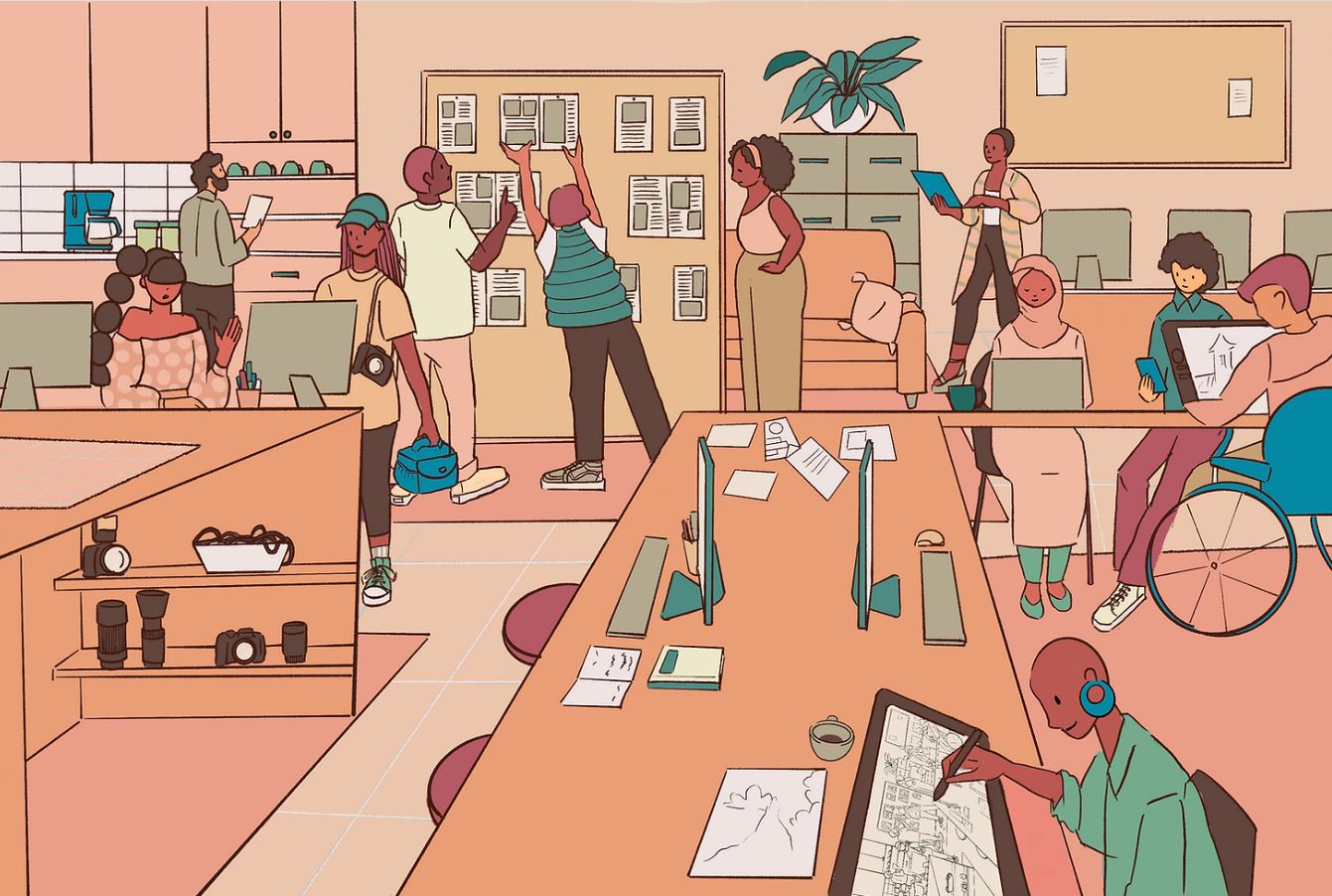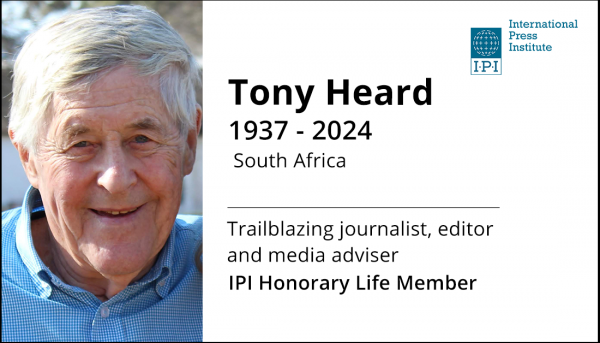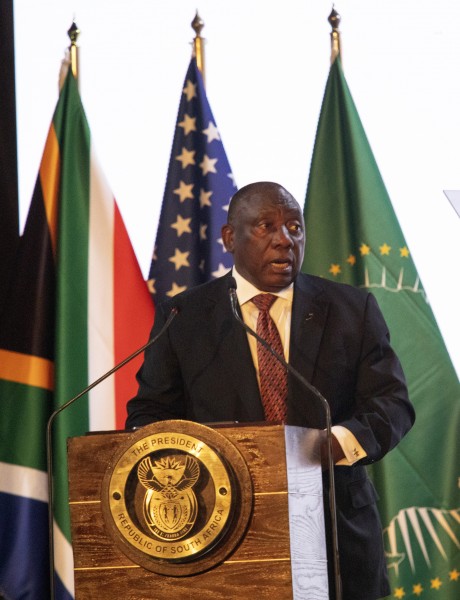It’s one of the oldest bits of advice in the world: to everything, there is a season. Now, Africa’s WhatsApp-delivered voice The Continent has taken that idea to heart, both in how they approach their news cycle and manage their own mental equilibrium.
The innovative concept of a continent-wide voice came out of those dark days of the early Covid season. The founding team could see the challenge of misinformation spreading on Meta’s messaging platform among family and friends. “We thought: ‘Wow! If fake news can proliferate on WhatsApp, what’s stopping real news from doing the same?” editor-in-chief Simon Allison told a recent virtual newsroom visit by the IPI Global Network.
“We thought: ‘Wow! If fake news can proliferate on WhatsApp, what’s stopping real news from doing the same?”
The team saw, too, how Zimbabwe’s Nigel Magamu was pioneering the WhatsApp newspaper with 263Chat (“absolutely brilliant” says Allison).
Then, the final piece fell into place: a PDF of the entire edition of one of South Africa’s most prestigious newspapers, The Sunday Times, was leaked online in March 2020, going viral on WhatsApp.
It all helped the team recognise what they already knew. Allison says: “WhatsApp is probably the single most powerful social media network that has ever been invented. I believe it’s more powerful than Facebook or Twitter because it is designed as a platform to communicate with friends and family.”
Communities editor Kiri Rupiah points out that WhatsApp is the primary means of communication for a lot of people in the global south.
She says: “Journalists have been doing a pivot to video, pivot to audio, paywalls, gamifying, all sorts of things. But they’ve not really focused on going to where their readers are.
We thought: ‘this is the biggest platform for people to receive the news and for people to talk to people that they trust. Why not go there and work from there?’”
Now, she says, they’ve followed their audience onto other messaging platforms like Telegram and Signal.
The Continent then applied this distribution insight to the audience they saw was being poorly served by existing offerings: the global pan-African community.
“What tends to happen in a lot of African countries,” says Allison, “ is there is a lot of really good journalism that happens about local and national news. But the costs and the complexity of covering news beyond your borders means that most do not have any form of foreign correspondents. So they rely entirely on the wires (AP, Reuters), sometimes the BBC, to fill the pages of those newspapers with what’s happening in Africa, and the rest of the world.”
The result, he says, is that news about Africa is largely determined by London-based editors for mainly western audiences. “Often those stories lack vital context. Often they take an angle that would be different for an African audience. Or they just don’t cover issues that are relevant to an African audience. So that was the gap that we wanted to fill.”

They launched on April 18, 2020, as a PDF (now about 30 pages) in WhatsApp circulated to their own networks of family and friends, Audience became distribution as the initial five asked their contacts to circulate it on to their networks. Within a week, they had about 1,000 subscribers.
“And that,” says Allison, “was the moment where we realized that there was an audience that needed this news, that wanted this news, and that this particular distribution mechanism was really, really effective for delivery.”
As ever in journalism, content follows format, as the team worked out how to adapt their “slow journalism” reporting to the distribution tool.
The Continent started with the support of South Africa’s Mail & Guardian where Allison was already Africa editor. Their experimentation with much shorter stories was motivated by what they saw as “the failure of 1,200 word pieces, written to fit a print page”, Editorial director Sipho Kings says.
The Continent settled on stories of about 300 words. Allison says: “We have to make it readable on a smartphone. We are also competing with Twitter, with Instagram, with Facebook for people’s attention, which means things need to be sharper and snappier. Those 300-word stories, if they’re edited well, have almost as much information and a narrative and quotes as a 1200-word story.
“And what we’ve done is we have saved the reader 75% of their time.”
Initially, The Continent was bootstrapped by its founders. Now, it’s largely funded through donor support, with some advertising on the PDF pages which they believe gives them a sustainable runway for at least five years. They restrain costs with a small staff working through a distributed newsroom.
Kings says they now have four full-time and five part-time staff working across Africa. They work hard to sustain diversity, with at least 50–50 gender breakdown and actively searching for new, African, writers.
In late 2021, they rolled out a readers’ donations trial. Kings says:. “It was a confirmation that we don’t want to pursue reader revenue, at least in the short to medium term. It is so much work to get money from people, either through subscriptions or through support, whichever model you go with. And it also fundamentally changes your relationship with the audience.”
Instead, he says, they’re better off leveraging the relationship to build distribution.
‘The challenges of Covid highlighted the risk of burn-out with a small team. Instead, The Continent structures around seasonal runs publishing late Friday night or Saturday morning over about 10 weeks.
It’s like an old-school Netflix documentary series, says Kings. “We have 40 editions in a year, broken up into four seasons. This means we make a newspaper for 10 weeks, and then we have a two to three break in between.
“Sometimes we just shut down because everyone’s exhausted and you can read it in the room. Other times we use that as a space to think about the future of The Continent. So our last break, five weeks ago, we had sprint sessions where we looked at all the things we hadn’t made decisions about. It was the time where we would have been making a newspaper to decide what we wanted to do in the future.”
The Continent has found a market gap with about 1.2 billion sitting in it, many of them eager for news written by, for and of them and their communities. That’s a gap and The Continent team is thinking about other steps to fill it, such as a French-language edition, podcasts and events.
It’s a matter of time, funding and opportunities. And finding the right season.
IPI’s Local Media Project is telling the stories of how local media around the world are reinventing everything to better serve their audiences and fulfil their key role in democracy. This article is part of our series profiling innovative local news publishers.
This article was made possible in part by support from the Friedrich Naumann Foundation (FNF).



